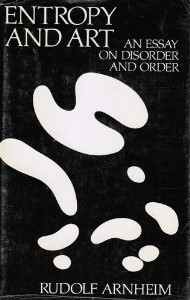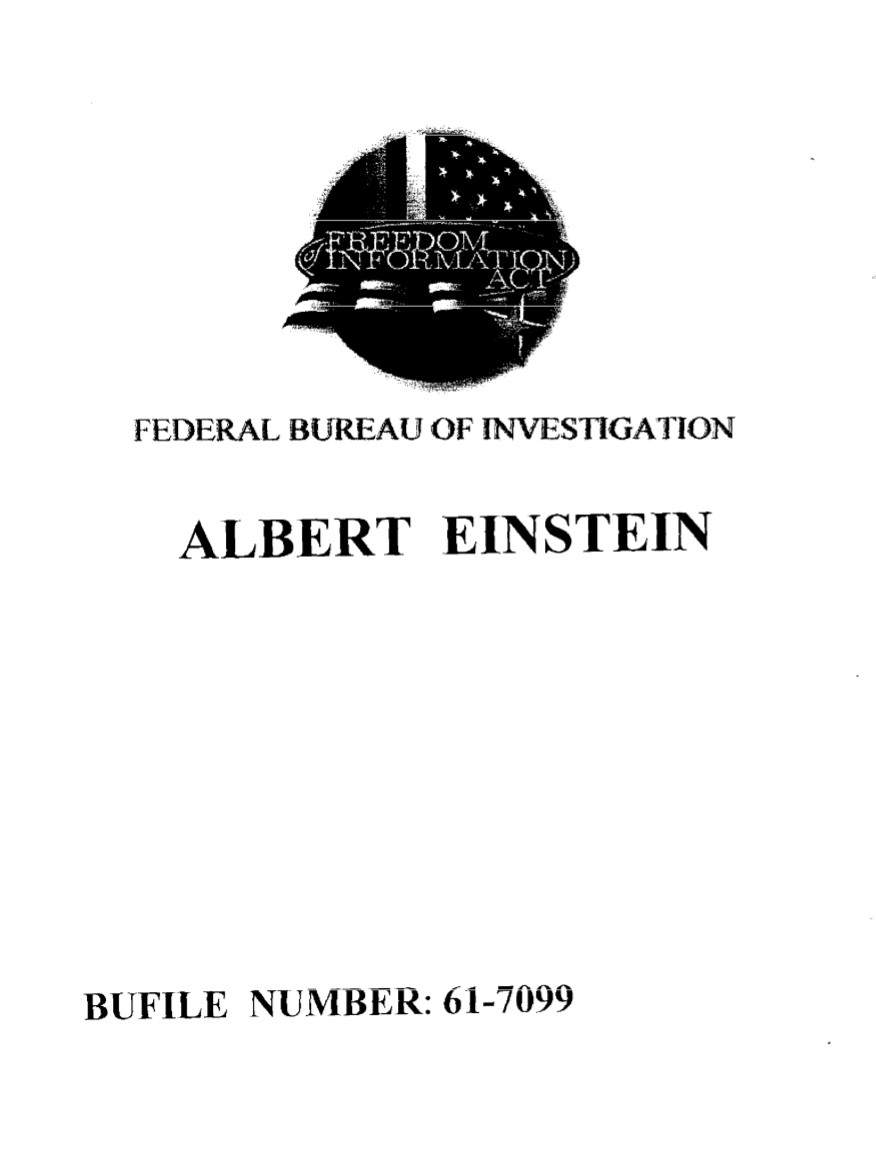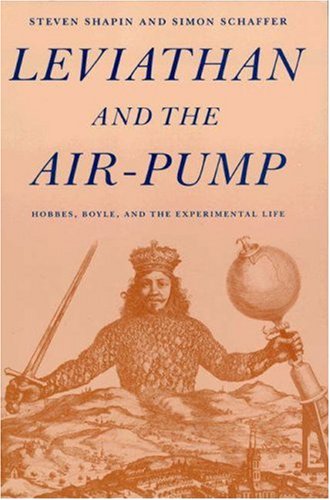Rudolf Arnheim: Entropy and Art: Essay on Disorder and Order (1971)
Filed under book | Tags: · art, entropy, homeostasis, information theory, perception, physics, psychophysics

“This essay is an attempt to reconcile the disturbing contradiction between the striving for order in nature and in man and the principle of entropy implicit in the second law of thermodynamics; between the tendency toward greater organization and the general trend of the material universe toward death and disorder.”
Publisher University of California Press, 1971
ISBN 0520018036, 9780520018037
64 pages
Publisher (2010 edition)
Comment (0)FBI Files on Albert Einstein (1932-1955)
Filed under records | Tags: · history, history of science, invention, physics, politics, science, war

Released through the Freedom of Information Act.
Publisher Federal Bureau of Information, undated
FBI Records: The Vault series
1449 pages
Steven Shapin, Simon Schaffer: Leviathan and the Air-Pump: Hobbes, Boyle, and the Experimental Life (1985)
Filed under book | Tags: · air, epistemology, experiment, history of science, knowledge, metaphysics, natural philosophy, philosophy, physics, pneumatics, science

“In the aftermath of the English Civil War, as people were groping for new forms of political order, Robert Boyle built an air-pump to do experiments. Does the story of Roundheads and Restoration have something to do with the origins of experimental science? Schaffer and Shapin believed it does.
Focusing on the debates between Boyle and his archcritic Thomas Hobbes over the air-pump, the authors proposed that ‘solutions to the problem of knowledge are solutions to the problem of social order.’ Both Boyle and Hobbes were looking for ways of establishing knowledge that did not decay into ad hominem attacks and political division. Boyle proposed the experiment as cure. He argued that facts should be manufactured by machines like the air-pump so that gentlemen could witness the experiments and produce knowledge that everyone agreed on. Hobbes, by contrast, looked for natural law and viewed experiments as the artificial, unreliable products of an exclusive guild.
The new approaches taken in Leviathan and the Air-Pump have been enormously influential on historical studies of science. Shapin and Schaffer found a moment of scientific revolution and showed how key scientific givens–facts, interpretations, experiment, truth–were fundamental to a new political order. Shapin and Schaffer were also innovative in their ethnographic approach. Attempting to understand the work habits, rituals, and social structures of a remote, unfamiliar group, they argued that politics were tied up in what scientists did, rather than what they said.”
Including a Translation of Thomas Hobbes’ Dialogus Physicus de Natura Aeris by Simon Schaffer
Publisher Princeton University Press, 1985
ISBN 0691083932, 9780691083933
xiv+440 pages
Reviews: Richard C. Jennings (British Journal for Philosophy of Science), Anna Marie Roos (H-Ideas), Richard Tuck (London Review of Books), J.L. Heilbron (Medical History), Katherine Pandora (UCLA Historical Journal), Aloysius Martinich (Journal of the History of Philosophy), Bruno Latour (Studies in the History and Philosophy of Science), P.B. Wood (History of Science), David Oldroyd (Social Epistemology, reply by William Lynch, reply by Oldroyd), Robert Kargon (Albion), I. Bernard Cohen (American Historical Review), Lawrence Busch (Science & Technology Studies), Mordechai Feingold (English Historical Review), Margaret C. Jacob (Isis), Owen Hannaway (Technology and Culture), Ian Hacking (British Journal for the History of Sciences), James G. Traynham (Journal of Interdisciplinary History), Richard S. Westfall (Philosophy of Science).
PDF
See also Introduction to 2011 edition.

